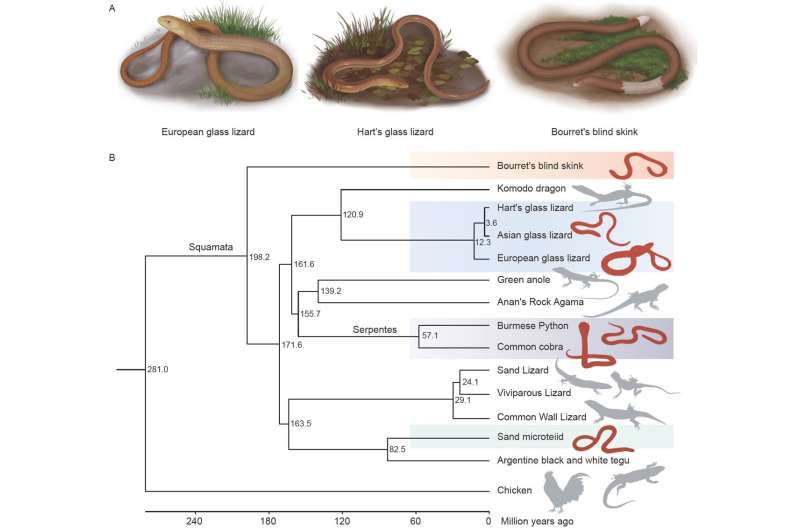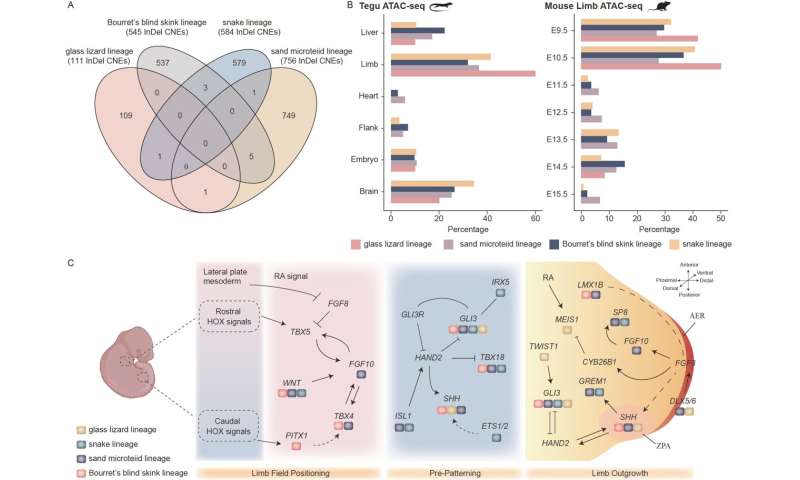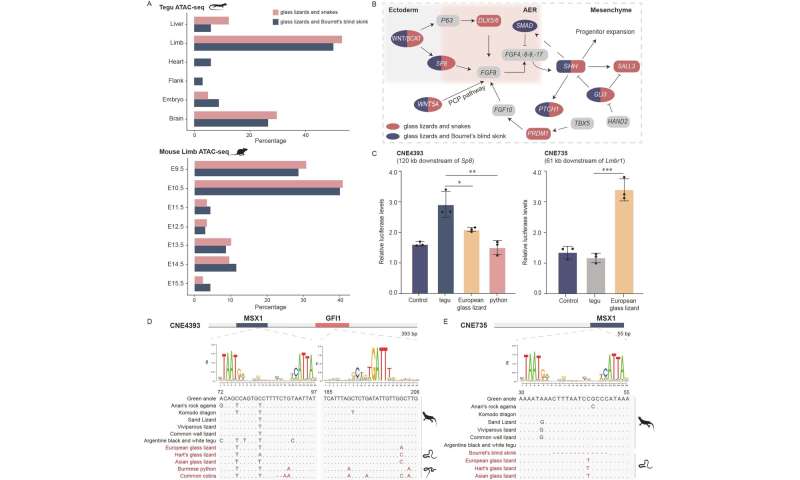Examining the developmental regulatory mechanism of limb loss in squamates

The development of limbs is significant for the origin and evolution of tetrapods, providing multiple functions and capabilities. Although limb loss has occurred in many clades to adapt to new environments, it is particularly common in Squamata, which have evolved independently at least 26 times. Squamates are therefore an ideal model for studying the evolution of limb loss.
In a study published in Science China Life Sciences, researchers performed de novo-assembled genomes of three limbless lizards from different clades of Squamata (i.e., European glass lizard, Hart’s glass lizard, and Bourret’s blind skink). The constructed topology indicated the independent limb losses in the squamate lineages.
The team further found the extensive existence of lineage-specific insertions and deletions (InDels) in the CNEs across limbless squamates. These InDel CNEs, together with the dCNEs, overlap with regulatory signals in limb development. Nearby genes of these InDel CNEs are involved in limb bud formation, such as Tbx4, Fgf10, and Gli3.
-
![Developmental regulatory mechanism of limb loss in squamates]()
Convergent dCNEs associated with limb regulatory elements and limb bud formation. Credit: Science China Press
-

InDel CNEs are primarily limbless-lineage specific and participate in regulatory networks during early limb development. Credit: Science China Press
Based on experiments, the authors found that the functions of these CNEs are affected by InDels, leading to an increase or decrease in the expression of downstream genes. This may be the important genetic mechanism for limb loss in squamates.
In this paper, the team presents the genetic mechanism that contributes to limb loss in squamates and their research sheds light on the importance of the regulatory element InDels in phenotypic evolution. This is important for understanding the genetic mechanism for the evolution of complex biological traits.
More information:
Science China Life Sciences (2023). DOI: 10.1007/s11427-023-2362-5
Citation:
Examining the developmental regulatory mechanism of limb loss in squamates (2023, May 31)
retrieved 31 May 2023
from https://phys.org/news/2023-05-developmental-regulatory-mechanism-limb-loss.html
This document is subject to copyright. Apart from any fair dealing for the purpose of private study or research, no
part may be reproduced without the written permission. The content is provided for information purposes only.
For all the latest Science News Click Here
For the latest news and updates, follow us on Google News.


